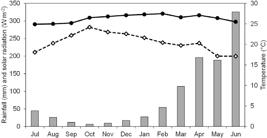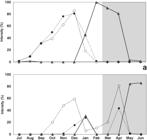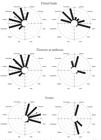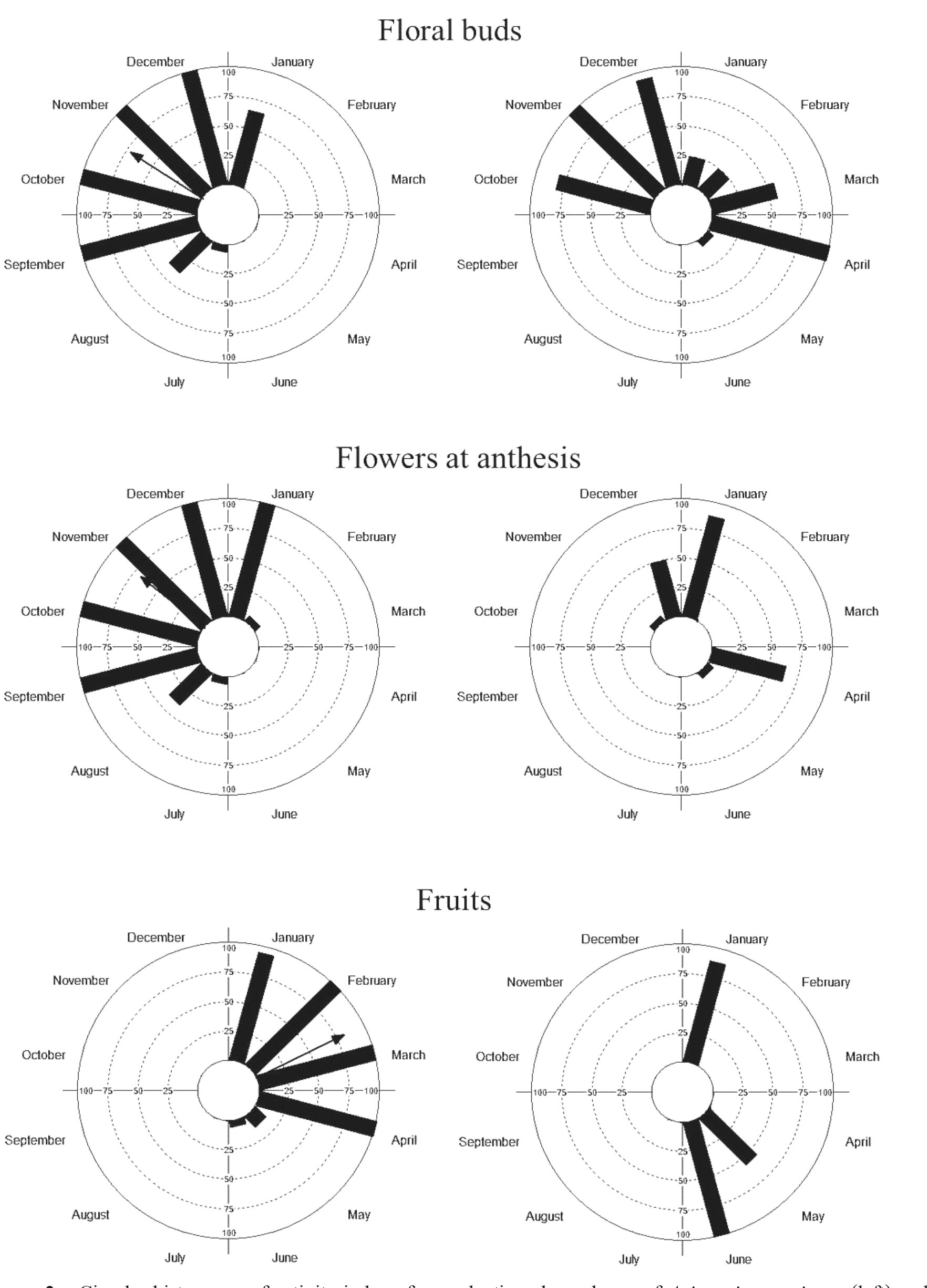Abstract
Information on plant phenological patterns aids in understanding the structure and functioning of ecosystems and support restoration projects in degraded areas. The aim of this study was to characterize the reproductive phenology of Avicennia germinans and Laguncularia racemosa in a mangrove forest in the Mamanguape River estuary in northeastern Brazil. The characterization was performed monthly from July 2016 to June 2017. We applied circular statistics to detect seasonal trends, calculated intra-specific synchrony, and performed regressions between the reproductive phenophases and the abiotic variables. Avicennia germinans exhibits seasonal responses to floral buds, flowers at anthesis, and fruit, with one reproductive episode per year (annual pattern). Laguncularia racemosa has no seasonal response, with one reproductive episode per year for floral buds (annual pattern) and two episodes for flowers at anthesis and fruits (subannual pattern). Reproductive phenophases of A. germinans exhibited higher intra-specific synchrony than L. racemosa. We provide evidence that temperature, solar radiation and rainfall are important drivers of the flowering rhythm in both species. In conclusion, the results of this study showed that the species exhibited different phenological responses, even though they were subjected to the same abiotic conditions.
Key words
Avicennia germinans; flowering; fruiting; Laguncularia racemosa

 Thumbnail
Thumbnail
 Thumbnail
Thumbnail
 Thumbnail
Thumbnail


